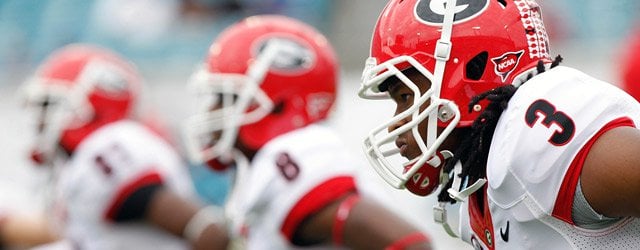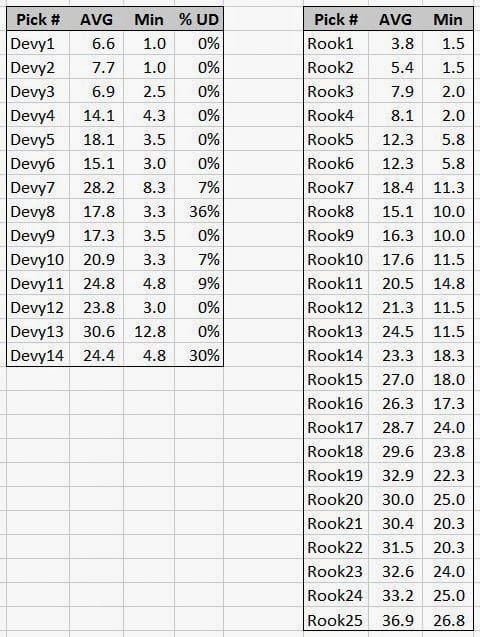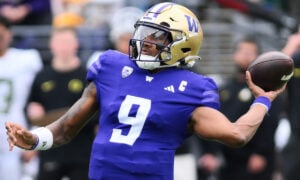The Value of Developmental Picks

One of the questions I had after playing in a handful of developmental leagues for a few years was how should devy picks be valued? And how should first round picks be valued given the removal of developmental players from the rookie draft pool?
I looked back at some developmental leagues to find some answers.

These tables are based on the results of four years of data for four developmental leagues and four non-developmental leagues, and should be read as follows:
*Devy #: the spot a player was selected in a developmental draft
*AVG: the average rookie draft position of those same players in non-developmental leagues drafts the subsequent year
*Min: the best average rookie draft position of those same players in non-devy leagues in the subsequent year
*UD: the percentage of leagues developmental players selected with that pick subsequently went undrafted
*Rook #: the spot a player was selected in devy league rookie draft (i.e. without the devy players)
*AVG: where those same players was selected in the rookie drafts of non-developmental leagues
*Min: the best average draft position that a player selected with the #X rookie pick in developmental leagues was selected in non-devy leagues
Example one:
The average rookie draft position for players taken with the first developmental pick was 6.6 in non-developmental leagues in a subsequent year, and at least one of those top-drafted devy players subsequently turned out to be the consensus top rookie pick (minimum 1.0).
Example two:
In developmental leagues, the average value of the 1.01 rookie pick was similar to rookie pick three or four (average 3.8) in non-devy leagues, but could be worth as much as the first or second pick (minimum 1.5).
[inlinead]The big takeaway here should be that the average values of similar rookie picks is actually higher than that of similar devy picks inside the first five or six picks, (Rookie #1 is more valuable than Devy #1 on average), and that the values after the first five or six are quite similar.
However, not surprisingly, in both cases the developmental picks have a much higher range of outcomes. Almost every developmental pick through 1.14 has been used to select at least a couple players who were top-four rookies in normal drafts the following year, but it’s also true that many developmental picks are close to valueless by the time that player arrives in the NFL. Let’s look at Lache Seastrunk as an example.
So the decision of whether to trade devy picks for rookie picks (or vice versa) largely comes down to confidence in ones ability to identify top prospects and a philosophical or strategic decision about whether to swing for the fences or take more of a sure thing.
Visit Rob on Twitter @7RoundsInApril.
- Beating the NFL Draft: Part Three - April 15, 2016
- Beating the NFL Draft: Part Two - April 14, 2016
- Beating the NFL Draft: Part One - April 13, 2016


































































